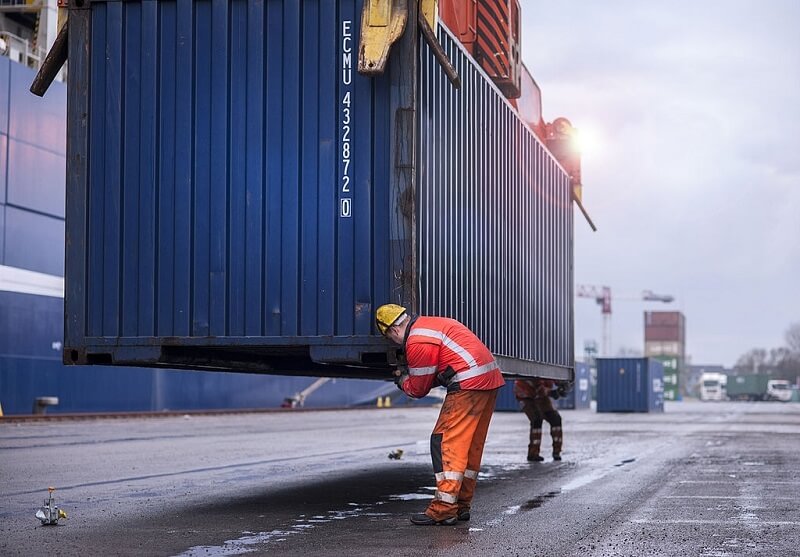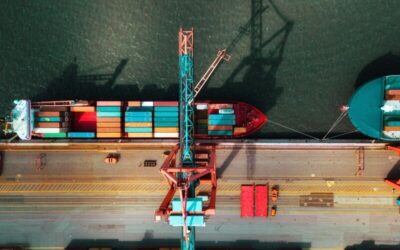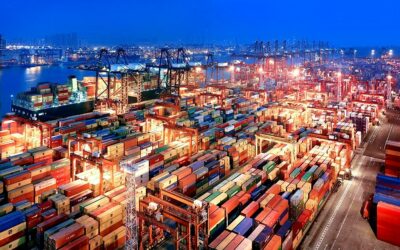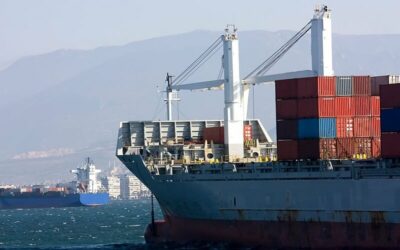An Ultimate Guide to Export Customs Clearance
All nations have their own particular sets of rules and regulations practiced inside their borders and to enable the movement of goods across borders, you’ll have to go through the process of customs clearance.
Many people dread these procedures because one tiny misunderstanding of any step can have serious consequences. So, for your understanding, we have discussed in detail what export clearance means and talked about the steps involved in these procedures.
First, you need to understand that customs control and legalize the product movement. Each item, entering or leaving the borders of a nation, must follow the customs’ requirements of that country, and you must abide by every customs’ rule to move them.
The goods need to be cleared before being loaded on the ships. The obligatory customs procedures at the time of export are what constitute export customs clearance.
So, what does the export customs clearance mean?
Table of Contents
What is Export Custom Clearance?
In short, the export customs clearance characterizes all the rules and procedures that need to be followed to export a specific item from an exporting nation and the completion of all the necessary documents.
The clearance procedures may vary from product to product and from country to country. The clearance process usually depends on the following
- The guidelines set up in the nation of export
- The type of products for shipment
- Any contract that exists between the trading countries (the incoterm?)
- The level of technological advancement in the land of export
How Complicated is it?
Getting export clearance must seem like a daunting task to some people., Especially, to those who are just stepping into the field of international business. If you are one of them, you need not worry., the things you need to be aware of for smooth customs clearance are discussed below.
One thing to keep in mind is that when you’re exporting goods, an essential job is to set up the correct documents. To carry out a smooth business, you would need to acquire all the export documentation information. You can face trouble if you miss out on even a single paper. Which documents are we talking about here?
Documents Needed
We can classify the documents needed in the import/export business into four groups
- Business documents (From Seller to the Buyer)
- Government documents (Customs Authority, Controlling Authority, Chamber, Certificate of Origin, etc)
- Financial documents (Bank L/C, etc)
- Shipping documents (Bill of Lading, Airway Bill, or Multimodal Through BL)
Let’s get down to business now and explore all the components of export clearance in detail.
Detailed Declaration
The first thing an exporter has to do is to submit a detailed declaration which is usually pre-prepared with blanks to be filled in. If there remains any discrepancy regarding the shipment contents, the customs officer may ask for additional information and charge extra fees.
So, all the information must be entered with zero mistakes. It is critical to have everything together; otherwise, you may have to face problems at the customs stage.
What information does a Declaration Form have?
The Declaration Form incorporates the following information:
1. The name, address, tax number or VAT number or EORI-number, phone, e-mail address, etc. of the following
- Shipper
- The authorized person in the sending company
- Buyer company
- The authorized person in the recipient company
2. Purpose of the shipment which can be
- Commercial
- Personal or sample, etc.
3. Details about the products including
- The exact name and English name of the item being shipped
- Place of origin
- Amount or quantity
- Net weight
- The type of material
- Product’s HS code
4. The details about the package including
- Number of bundles
- Measurements
- Package type,
- The gross weight of the packages and so forth
What Next?
After you have filled the declaration form, all you need to do is gather the necessary export documents and submit them. The primary documents that you need are:
- An invoice from Seller to the Buyer
- Packing list
- Bill of lading
In case no extra certificate or authentication is required, you can ship your items with just the documents mentioned in the list above. We have discussed some of the other essential documents below:
Quote
The quote includes the request from an exporter to the importer. It aims to demand the information and all the detail regarding the product including its:
- Value
- Amount
- Quality
- Instalment terms
- Delivery and exchange condition
Commercial Invoice
The exporter issues this invoice to ask for the payment of the shipment according to the deal. The invoice incorporates all the information, including the organization’s name, contact information regarding shipping and purchasing parties. And other information like:
- Date and Invoice Number
- Payment and delivery methods
- It provides name, description, quantity and the unit price of the products.
- And the total cost on the invoice and the bank account information.
Bill of Lading
Also called the ‘Airway bill’ (for air cargo) and ‘CMR’ (for shipments by road), the bill of lading is the most important document for international shipping. Other than the bank account and price details, all the information required in the bill of lading is pretty much the same as in the above-discussed documents.
This document validates that the goods have been loaded on the vessel and are ready to be transported. One thing to note is that no one can change or edit the information in the bill of lading as You have to send only the original document along with the shipment.
Packaging list
The list includes the complete information regarding the buyer and the shipper, the company’s name and contact information along with:
- The name, description and net weight of the products
- Date and invoice number
- The dimensions and gross weight of the package.
You must mention the place of origin on the invoice if the document of origin is not needed for the shipment. Moreover, for faster processing, you can include the HS code of the products on the invoice too.
Sales Contract
This legal document constitutes all the information about the purchase order made by the shipper.
Pro Forma Invoice
The exporter issues this document to give the product details to the importer and the importer can use it to get an import license or arrange funds.
Shipping order
A shipping order is prepared by the shipping organization showing the details of the cargo.
Additional Documents
Some countries may ask for additional documents that may include
Certificate of Origin
In specific nations, it’s essential to state the place of origin on the receipt.
Movement Certificate
The trade unions, free and bilateral trade agreements can allow trade with the exemption of customs duty. This certificate can enable you to move the products that are tax-exempted freely.
Assessment Certificate
Based on the types of products some countries demand certificates including,
- health certificates
- test certificates
- Inspection certificate
- analysis reports, and much more.
Health Certificate
You’ll need it for exporting food items to ensure that the goods are not dangerous for humans.
Inspection Certificate
The exporter can get this certificate on buyer’s demand to authenticate that its quality is as mentioned.
Insurance Certificate
Exporters can ship internationally without a protection strategy. And they can also set up an insurance policy for their products, and if they do, then insurance certificate serves as a piece of evidence.
This certificate obtained from an insurance organization guarantees that the company would compensate for the loss or damage of products during transit.
The other document required for customs clearance may include a dangerous goods declaration if you are exporting any harmful material, consular invoices, etc. In some nations, you can submit these documents electronically too.
Steps Involved in Custom Clearance
The initial step is to prepare well! In case you are exporting products, you should be well aware of the destination country’s customs procedures for that product. Export is a financial action supported by states and exporters need to focus on limitations imposed by different countries.
The level of strictness varies from one country to another. For instance, every country has a list of restricted items and, when sending out weapons or ammo, it is essential to get trade consents or export licenses from the authorities.
The Crux?
First of all, you need to assemble data. It could be possible that the particular item may be banned in that country or may need some additional documents. Then follow the steps below:
- Pack the goods and make them ready for transportation.
- Move on to the container booking
- Get an export business number from custom’s authority
- Prepare the documents following the country’s laws
- Ensure that the items you want to ship are not in the restricted items list
- Prepare the shipping bill before customs clearance showing all the particulars of the goods to be exported
- Submit five copies of the shipping bill to the customs appraiser at the customs office along with other documents that may include:
- Export Contract and Order
- Letter of Credit
- Commercial Invoice
- Certificate of origin
- Certificate of Inspection
- Insurance certificate
- Then you’ll have to go to the superintendent of the command port for the carting order which will allow the cargo entry inside the dock
- Then the cargo is moved and stored in the shed appropriate for it.
- Departure of goods
- Completing the export customs declaration manually or electronically.
How Long Does it Take to Complete?
So, you must be thinking, how long does it all take and what’s the best technique for a smooth customs clearance?
Usually, the whole process takes less than 24 hours but there are exceptions and it may take days or weeks for the proper inspection of goods.
Preparation is the key to a smooth flow of customs procedures. If you have everything ready and you follow each step accurately, you will not experience any delays or extra charges!
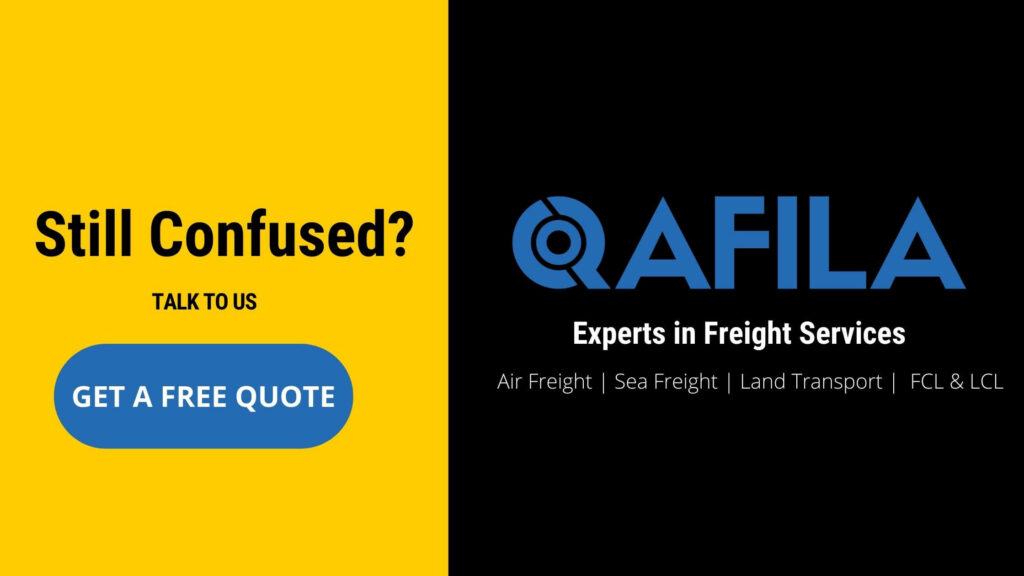
While you can oversee customs procedures without freight forwarder or broker assistance, you can also choose to sit back, relax, and entrust all these technical responsibilities to a reliable freight forwarding company. The company can act as a valuable assistant in fulfilling every step with accuracy and efficiency.
